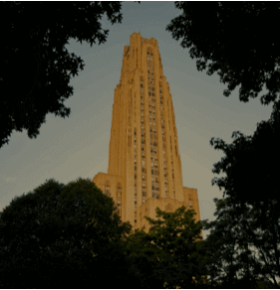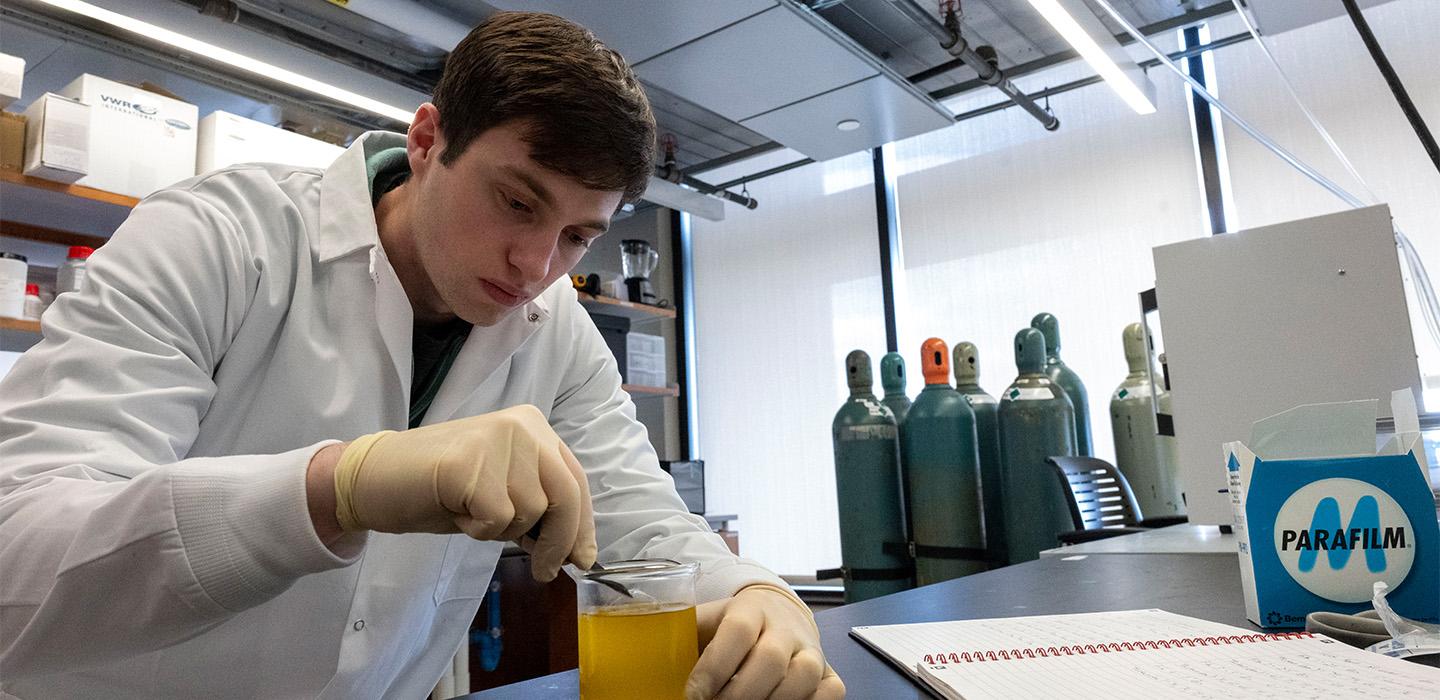
Subscribe to Pittwire Today
Get the most interesting and important stories from the University of Pittsburgh.Snack bags, plastic toys, electronics: Many products have a life cycle that looks like a one-way conveyer belt to a landfill. But what if we turned that straight line into a circle instead?
That’s the challenge posed by the “circular economy” concept — reducing waste by designing products and supply chains around reuse — and it’s the inspiration behind Pitt’s Covestro Circular Economy Program, where engineering students are learning to see the bigger picture of sustainability.
The program, developed by the Mascaro Center for Sustainable Innovation, encourages students to think not just about new products and processes but about the economic and policy landscape that determines whether those inventions will be adopted. It’s a crucial perspective for engineers in an increasingly complex and interconnected world.
“As technological geeks, we often have this tunnel vision,” said program director Götz Veser, the Nickolas Dececco Professor of Chemical Engineering in the Swanson School of Engineering. “You can come up with the world’s best technological solution, but if you don’t keep the framework around it in mind, it won’t have any impact — because it won’t be implemented.”
The program’s fellows take three core classes and two electives outside the Swanson School, earning a graduate certificate in the circular economy. They also take part in events and professional days with industry experts, including at polymer manufacturer Covestro, which collaborated with Pitt to launch the program.
One student taking advantage of that partnership is Lakshmi Ananthabhotla, a third-year chemical and petroleum engineering PhD student in the Swanson School. Ananthabhotla’s research combines the strengths of quantum mechanics and machine learning to find ways to chemically break down and recycle a type of plastic called polyurethane.
“I want to keep working on problems like these, but also not lose the connection to how to apply it practically — not just sticking to fundamental and laboratory studies but finding more industry collaborations,” she said.
Now Ananthabhotla is spending her summer as an intern at Covestro and hopes to maintain that perspective moving forward in her career. And through classes in environmental law, business and sustainability, the fellowship has encouraged her to put her quantum-scale research in the context of global issues of plastic waste management.
“As I think about scaling up this process, an understanding of environmental policies becomes increasingly important,” she said.
Though still in its early stages, the circular economy program has already expanded in scope, including by offering the certificate as a stand-alone credential for anyone to gain circular economy experience. The team is now pursuing more industry partnerships to sustain the program into the future, led by executive director Melissa Bilec, co-director of the Mascaro Center for Sustainable Engineering (MCSI) and George M. and Eva M. Bevier Professor in Civil and Environmental Engineering. Bilec has also received external funding for related work through the National Science Foundation’s Convergence Accelerator.
“At Pitt, we are advancing innovative education and research programs that address pressing societal challenges by integrating design, technology and industry collaboration,” Bilec said. “Our students are eager to engage, our industry partners are actively involved, and the MCSI team is deeply committed to driving the circular economy forward on campus and beyond.”
Riding the wave
The image of a circular economy might evoke recycling, but that’s just one piece of the pie. There’s creating products that are meant to be reused or repairing products to extend their lives. And then there’s educating consumers on how to avoid sending products to a landfill.
All are part of a perspective that proponents see as not just important, but necessary, as many scientists believe we’ve reached or even exceeded our planet’s ability to absorb the waste we create — and it’s in the national interest too, according to Veser, with the potential to reduce U.S. reliance on international supply chains while creating well-paying jobs. Meanwhile, Europe and China aren’t slowing down in their own pursuit of sustainability.
“They’re pushing ahead,” said Veser. “And if they develop the technologies, if they educate the workforce for this development while we are standing on the sidelines, it will be incredibly difficult for us to catch up.”
Moreover, students are demanding programs like these that let them pursue sustainability in a multidisciplinary way. That was one thing that attracted Carlan Gray (pictured), a third-year chemical and petroleum engineering PhD student, to the program.
“The circular economy is a problem that spans a lot of different disciplines,” Gray said. “And so in our cohort I, as a chemical engineer, interact with people with very different perspectives.”
It was that exposure to different perspectives that saw Gray recruited to a team of innovators that took first place in this year’s Big Idea Competition for their work harnessing the energy of ocean waves. Leveraging his circular economy coursework in business and economics, Gray performed the team’s market research, talking to potential consumers to see who could benefit the most from ocean-based power and figuring out the size of the market.
“I certainly got nervous because this isn’t my background, but I was willing to learn and try,” said Gray. “It was something that I might have not have done if I were just thinking that I want to be a traditional chemical engineer.”
Of course, Gray does traditional engineering research too — he’s identified a plastic derived from seaweed that breaks apart in saltwater, which could potentially reduce plastic pollution. He’s working to make it longer-lasting and less rigid. But when asked about the future, he points to how learning about the circular economy has made him want to do more interdisciplinary work and keep his options open.
“It’s just broadened my perspective, and ultimately now I’m much more open to wherever my career goes,” said Gray.
Photography by Tom Altany


